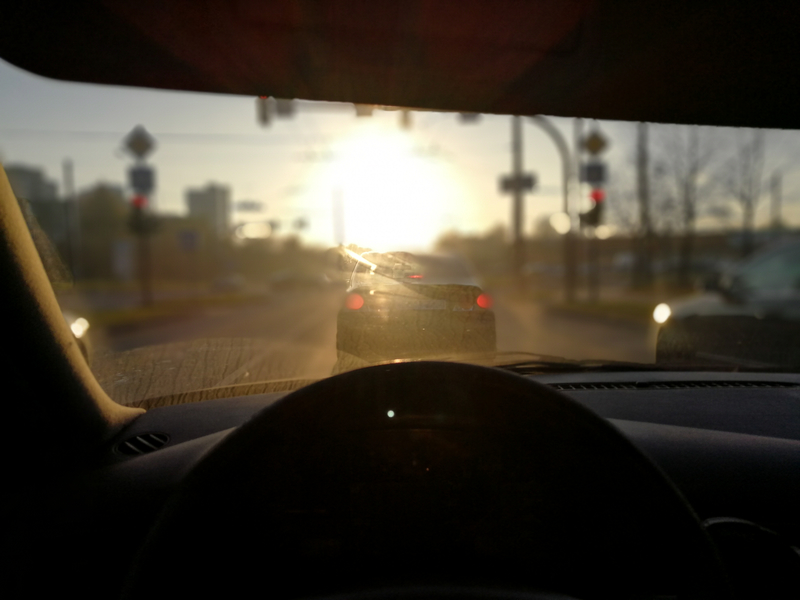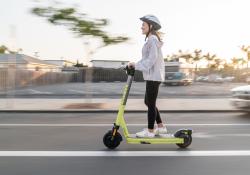
This year sees the fourth anniversary of France, England and Wales introducing bans on smoking in cars where children under 18 are passengers.
The countries are on a growing list of those trying to protect youngsters from second-hand smoke, which builds to high concentrations in enclosed spaces such as cars. Bans are also on the statute books of Australia, Bahrain, Canada (in all states bar Quebec), Cyprus, South Africa, United Arab Emirates and a small handful of US states. Earlier this year, New Zealand enacted a law which also includes vaping, and comes into effect in 2020. Finland, Greece, the Netherlands and Taiwan are set to join it.
The laws also add to the prohibitions on workplace smoking, which covered work vehicles used by two or more people. So do these bans work? Little data exists on how much of a deterrent the law has created in each country, but a 2015 paper showed that one in eight (12%) Quebecois smokers (who thought, wrongly, that Canadian law covered Quebec) still smoked “at least occasionally” in cars with children. But this number increased to one in three (32%) for those who knew the law didn’t apply in the state.
These figures are likely to be higher in real life, with surveys (even anonymous ones) being inaccurate when people are ashamed of the answer. And, even if accurate, 12% of people admitting to do something when they think it’s illegal is high.
In the UK, just one fine has been issued for breaking this law – which suggests one of three things: it has worked; the police see it as a low priority; or it is too hard to enforce.
Cost-effective deterrent
Cameras coupled with significant fines or the fear of being caught have been proven to act as a very cost-effective deterrent: data from California Polytechnic State University showed red light violations dropped by around 60% when a camera was present. However, windscreen glare has, until recently, prevented the ability of the cameras to see into the vehicle.
While the technical capabilities of cameras have improved significantly in recent years - ANPR cameras can automatically capture the number plate, colour, make and type of vehicle and then cross-reference this against vehicle and criminal databases - glare presents a significant challenge in proving who was driving and what’s happening in the vehicle, therefore limiting the effectiveness of the law. As a conference paper presented at 2013’s Beijing Four Continents Conference on road safety put it:
“[Due] to e.g. lighting conditions, glare, coatings on car windows or intentional obstruction, the recognisability of the face of the driver on an evidence photo may be difficult. This reduces the prosecutability rate of the registered violations. Processing rejections if the owner was not driving also adds to the operational workload.”
The paper also highlighted that analysing the photo is both labour-intensive and costly, meaning authorities would spend more to police it than they could make in fines.
This is highlighted well in public data published by the German state of Baden- Württemberg, where many driving violations captured by an automated camera system are stalled due to an inability to identify the driver. And if you can’t see enough to identify the driver, you probably cannot see clearly enough who is in the back seat to enforce the law.
Hard to police
Of course, smoking when children are in the vehicle isn’t the only law that has been hard to police using automated cameras. Potentially one of the most damaging ones is the use of mobile phones, and the distraction they cause. A 2018 systemic literature review of 4,907 articles, published in the Journal of Emergencies, Trauma and Shock, found that quoted statistics varied widely, but cited one (outlying) paper that attributed 44.7% of road traffic injuries and fatalities in the sample studied to be caused by mobile phone-based distraction. The authors also believed these studies, on average, “underestimate the actual prevalence of road traffic injuries related to mobile device use”.
Elsewhere, World Health Organisation (WHO) data states the use of mobile phones while driving brings a four-fold increase in the risk of being involved in a crash. More than 30 countries around the world have made it illegal to use a handheld device while driving, some with significant fines - and even jail sentences. Oman, for example, has a maximum punishment for mobile device use while driving of up to 10 days in jail and a fine of $780.
But the risk of getting caught in many places isn’t high. As with cigarette use, it is costly to enforce and hard to automate. In particular, glare prevents cameras from seeing into the car and, as a result, drivers often risk using the mobile. For instance, UK survey data from 2018 states that, despite the known consequences, 25% of drivers admit to doing it; WHO cites Australian research that suggests one in six regularly send texts while driving; and a US study found 27% of American adults admit to having read or sent texts while driving.
Other rules affected by glare include the policing of multiple-occupancy lanes, as well as seatbelt and child-seat laws - and again, enforcing these may enable countless young lives to be saved.
Tech catch-up
Last year saw the introduction of a new class of imaging sensor, one that integrates a four-directional (0o, 45o, 90o, and 135o) wire-grid polarisation filter below the on-chip lens. Each pixel can be assigned an angle of light, ordered in a 2x2 calculation unit.
The sensor outputs 5.07 MP images (creating 4 x 1.27 MP images in each plane) at 23 frames per second. And by using the intensity of each plane it’s possible to calculate the direction light and the degree of polarisation and compile the images to create a clear image that can be used to increase the usability of the images regardless of weather and light conditions.
Among the first industrial camera modules to use this sensor for ITS applications is from Sony Europe’s Image Sensing Solutions division, the XCG-CP510. Sony has also launched a software development kit to speed development on this new kind of sensor - with an example application for windscreen-glare elimination in ITS applications. This cuts the development time from six to 24 months (depending on the application and development team) to six to 12 weeks.
Unenforceable law?
Some have argued that laws such as the ones preventing smoking in cars with children are not enforceable and therefore not fit for purpose. I’d argue they were just ahead of their time, technologically speaking. Assuming Baden-Württemberg’s data is indicative of the bigger picture - and there is no reason to expect it is wildly abnormal - then authorities are both losing out on significant revenues through lost fines and dangerous, illegal driving practices are going unchecked. As we’ve seen, cameras - and the increased fear of being caught - have been shown to act as a strong deterrent to speeding and jumping red lights. And as local authorities adopt (and as the public become aware of) these new polarised camera module technologies, which are capable of seeing through the windscreen reliably, it’s safe to assume that drivers will adapt their behaviour as they did around red-light jumping, with less mobile phone usage, greater seatbelt use and reduced smoking in cars - all of which means a safer environment for everyone.











